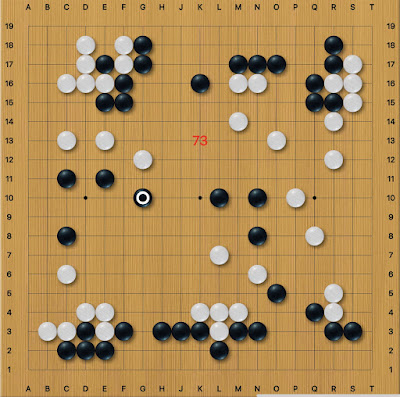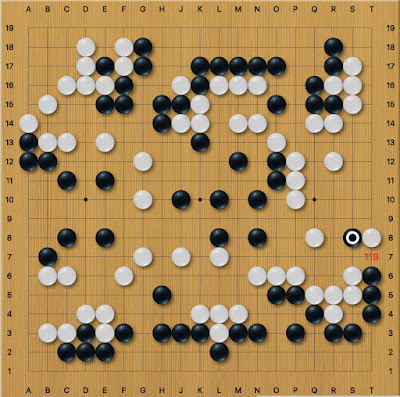I have come to recognize the value of Spaced Repetition Problems. They are used on the web site for Guo Juan’s Internet Go School. The problems help me to remember what I learn there, especially joseki, and the new AI variations that I have found difficult to digest.
Not long ago AI-Sensei added the ability to create Spaced Repetition Problems using your own games. At first the problems were based only on the moves that Ai-Sensei suggested. Recently though, the ability to create your own problems was added. You use the Trial Board to set up a correct answer to a problem in your game. You then create a problem from that position. I do not know if the free version of the web site supports the creation of problems. I subscribe to the Basic level of the service.
Last week I played an AYD game with a comment from In-Seong that I wanted seared into my memory. It seemed like the right time to give the Spaced Repetition Problems feature on AI-Sensei a try.
I found the process to be very intuitive. I navigated to the place in the game record where the correct answer would have been an alternative next move to my incorrect response. I clicked on the Trial Board. I played the alternative move. Then I clicked on “Add Problem” and my problem was created. It was as simple as that.
It was so simple that I decided to watch the entire video review of my game so I could create some more problems for it. I made all but one of the problems viewed from my side of the game. I could have made more problems from White’s perspective. That might actually help me view games from the perspective of my opponent, which is something I have difficulty doing.
After creating a number of problems for my game with Rhett23 I started a review session. There were a few additional problems in the review session from a time when I was playing around with creating problems based on the suggestions of AI-Sensei.
Below are all of the problems from my game with Rhett23.
Above is the suggested move that gave me the idea to create my own problems. In-Seong was quite surprised that I had not considered the cut at L4. It is my “special problem” not to see obvious moves like this. I am working on getting better about this.
Above is a recommendation to create the Dog Face position. In-Seong also suggested adding a move at o8 afterwards for additional good shape.
Above In-Seong expected me to help my side group with g10 rather than playing at k13. I like how the problem shows the actual move in red.
Above it was suggested that e9 would have offered better help to my group than the move I chose at 75. The bad move opened my group up to attack from White. I made a problem for White using the suggested attack.










No comments:
Post a Comment